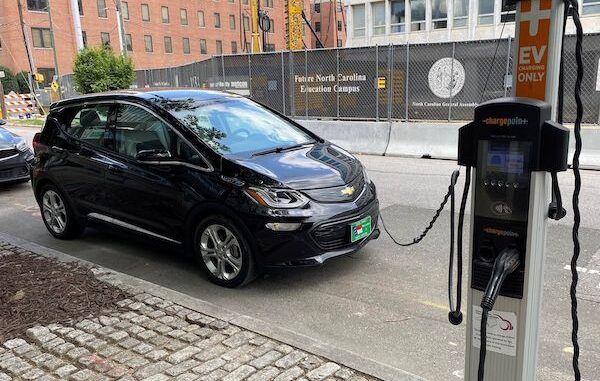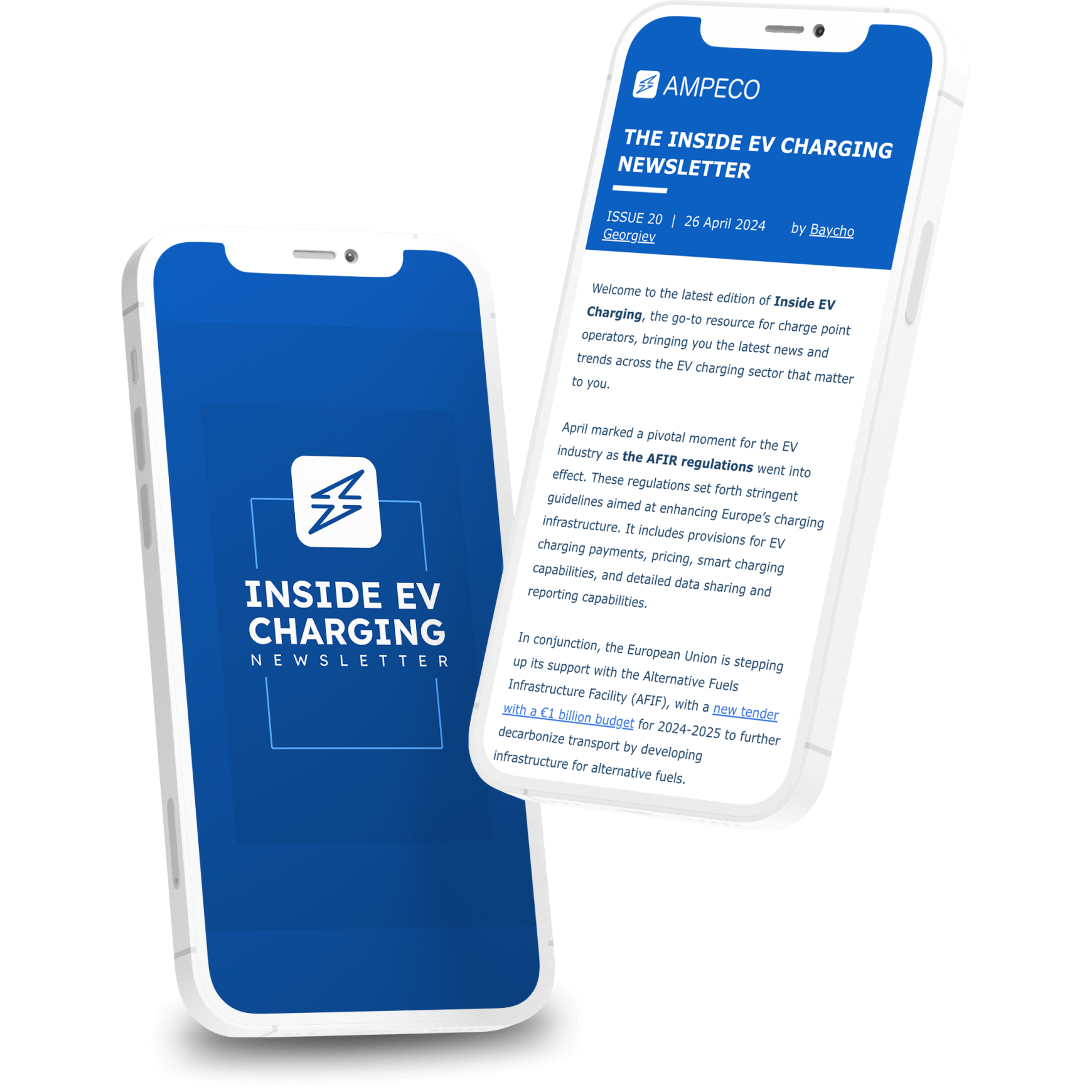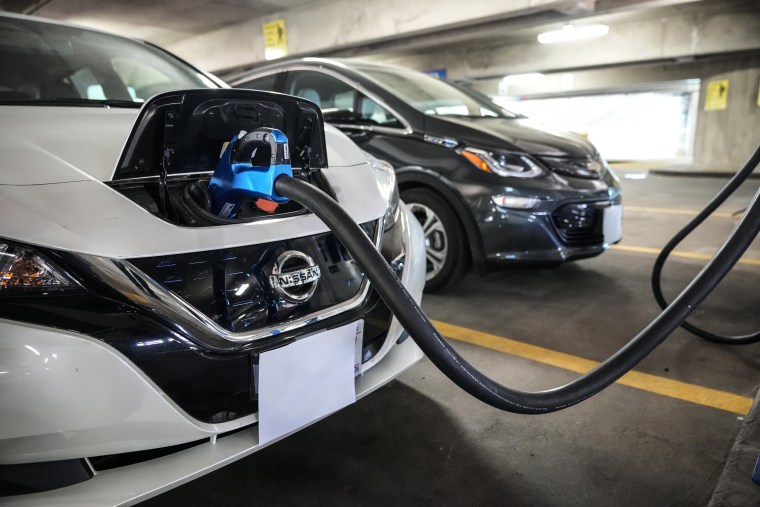Leading EV Charging News: Secret Updates on Framework and Development

Current Advancements in Fast-Charging Innovation

Additionally, developments in battery modern technology, including enhanced thermal management systems and higher power density batteries, complement fast-charging capacities. These developments alleviate the risk of battery destruction during fast charging, ensuring durability and efficiency for EV owners.
Furthermore, the assimilation of smart billing services is enhancing customer experience, enabling real-time tracking and dynamic pricing models. EV Charging news. This versatility permits vehicle drivers to optimize charging costs and times based on grid need
As automakers remain to spend in fast-charging networks, the partnership in between sector stakeholders is vital. Partnerships in between billing terminal service providers and auto producers are leading the way for considerable coverage, ultimately fostering a much more durable EV ecological community. These advancements are pivotal in supporting the transition to sustainable transport.
Federal Government Campaigns for Billing Development
Federal government campaigns play a critical role in the development of electric vehicle (EV) billing infrastructure, assisting in the shift to lasting transport. Various federal and state programs are being implemented to boost billing availability, minimize the financial worry on customers, and advertise the adoption of electric lorries.
Especially, the U.S. federal government has actually designated considerable funding via the Framework Investment and Jobs Act, which earmarks $7.5 billion for EV charging network development throughout the country. This funding is focused on deploying countless brand-new billing stations, specifically in underserved locations, thus dealing with variety anxiety amongst prospective EV buyers.
In addition, various states are enacting regulations to streamline the allowing process for billing station installations, which is crucial for increasing deployment. Incentives such as tax obligation credit reports and rebates for both customers and companies are additionally being introduced to motivate the setup of charging facilities.
Furthermore, public-private collaborations are increasingly ending up being an emphasis, leveraging personal investment to enhance government financing. These initiatives highlight a joint approach necessary for constructing a efficient and detailed EV billing network, ultimately adding to a greener and even more sustainable future.
Ingenious Battery Solutions Enhancing Performance
Transforming the landscape of electric automobile (EV) technology, ingenious battery options are dramatically enhancing effectiveness and efficiency. Breakthroughs in battery chemistry, particularly with lithium-sulfur and solid-state batteries, are causing boosted power density, which permits longer varieties and faster billing times. These brand-new battery kinds have the possible to surpass typical lithium-ion batteries by using greater capabilities while lowering weight, therefore improving overall vehicle performance.
Additionally, advancements in battery administration systems (BMS) are maximizing power usage and extending battery life-span. Intelligent algorithms monitor battery health and wellness and performance, allowing real-time adjustments to charging and releasing processes. This not just enhances the performance of the battery but also guarantees a more lasting and dependable energy source for EVs.
Additionally, the assimilation of reusing technologies is attending to the ecological influence of battery production and disposal. Innovations in second-life applications for EV batteries are facilitating their usage in power storage systems, contributing to a circular economic climate.
As these cutting-edge battery solutions remain to advance, they assure to change the EV market, making electric automobiles a lot more appealing and accessible to a more comprehensive audience while sustaining global sustainability goals.

Collaboration Between Automakers and Charging Networks
Identifying navigate to this site the essential demand for a robust charging infrastructure, automakers are increasingly working together with charging network suppliers to boost the EV possession experience (EV Charging news). These collaborations intend to develop a smooth billing ecological community that profits consumers and supports the shift to electric cars
Major automobile brands are joining pressures with recognized charging networks to expand their charging terminal insurance coverage, making certain vehicle drivers have accessibility to practical and trusted billing alternatives. For instance, collaborations with networks like ChargePoint and Electrify America permit automakers to integrate billing remedies straight into their vehicles' navigating systems, assisting users to the closest terminals and offering real-time accessibility updates.
Moreover, these partnerships commonly cause the development of fast-charging modern technologies that considerably reduce the moment needed to charge an EV. By pooling resources and experience, car manufacturers and charging networks can introduce faster, producing solutions that satisfy the expanding demand for electrical wheelchair.
Furthermore, joint efforts might also cause more standardized billing protocols, which can ease consumer complication and promote wider EV fostering. In general, these critical partnerships are pivotal in developing a easy to use and reliable charging facilities that fulfills the demands of a broadening electrical vehicle market.
Difficulties Encountering EV Billing Infrastructure
As the electric automobile market proceeds to expand, several difficulties are appearing that prevent the development of an extensive charging facilities. Among the primary challenges is the not enough variety of billing terminals, particularly in rural and underserved urban areas. This gap produces variety stress and anxiety amongst possible EV customers, deterring them from making the switch.
Furthermore, the lack of standardization in billing modern technology makes complex the framework landscape. Variations in plug types and charging rates can produce confusion for customers and boost operational intricacies for billing network operators.
Another pushing problem is the high cost linked with the installment and maintenance of billing terminals, which can be a barrier for both exclusive services and public entities. Lastly, regulatory difficulties and zoning constraints can delay the release of charging framework, hampering progress in increasing necessary services. Dealing with these obstacles will be vital for fostering a robust EV ecological community that supports the change to sustainable transport.
Conclusion
To conclude, the recurring advancements in EV charging innovation, sustained by significant government efforts and cutting-edge battery remedies, are essential for the growth and effectiveness of electrical automobile framework. Collaborations between automakers and charging suppliers better boost terminal insurance coverage, addressing the growing need for accessible charging options. Despite challenges that persist within the EV billing landscape, these growths indicate a favorable trajectory in the direction of an extra effective and sustainable electric lorry ecosystem.
Innovations in billing infrastructure have led to the development of ultra-fast chargers capable of supplying up to 350 kW of power, substantially decreasing billing times. Variations look here in plug types and billing rates can develop complication for individuals and enhance operational intricacies for billing network operators.In conclusion, the ongoing advancements in EV billing innovation, supported by substantial federal government initiatives and cutting-edge battery solutions, are essential for the expansion and performance of electric vehicle framework. Partnerships between car manufacturers and billing carriers additionally improve terminal protection, resolving the expanding demand for accessible click here now billing options. In spite of obstacles that continue within the EV billing landscape, these advancements indicate a positive trajectory in the direction of a more reliable and sustainable electrical vehicle ecological community.